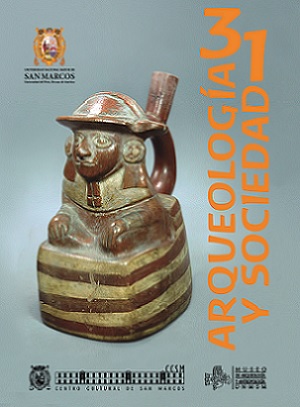NEGROS ESCLAVOS Y SEGREGACIÓN ESPACIAL EN LA SIERRA DE PIURA: SIGLOS XVIII Y XIX
DOI:
https://doi.org/10.15381/arqueolsoc.2016n31.e13312Keywords:
Piura, blacks, segregation, slavery, Guarmaca, hacienda (big land), highlands, AdrianzenAbstract
This research paper studies the different kinds and meanings assumed by slavery and spatial segregation in Piura highlands between the years 1750-1850 while examining prosecutions of their local large landowners. In 16th century, the Incas used the ‘mitimae’ multi-ethnic people to colonize Piura highlands. In the same way, in 18th century, the Spaniards and Creoles used slave workforce to expand large rural properties (cattle ranches andhaciendas) and also organized small urban centers (towns and villages) such as Ayabaca, Huancabamba and Guarmaca, with the objective of reproduce and repotence the economy related to husk (cascarilla), cattle and tobacco with the populations settled in the jungle mountains of Loja and Jaén de los Bracamoros. Spatial segregation was a mechanism used by the elite during the rule of the Bourbons and the early peruvian republic to control afro-descendant people that unleash a variety of models of resistance and social conflict expressed individually or collectively. The ideological discourse to justify this practice will be linked to the fight against abolitionism promoted by General San Martin since 1821. Reviewing the prosecutions of Creole families -such as the Adrianzen- will allow us to locate and qualitatively understand the segregationist dynamics of landowners with afro-descendant individuals and families between Piura’s coast and highlands.Downloads
Published
Issue
Section
License
Copyright (c) 2017 César Espinoza Claudio

This work is licensed under a Creative Commons Attribution-NonCommercial-ShareAlike 4.0 International License.
THE AUTHORS RETAIN THEIR RIGHTS:
a. The authors retain their trademark and patent rights, and also on any process or procedure described in the article.
b. The authors retain the right to share, copy, distribute, perform and publicly communicate the article published in the Arqueología y Sociedad (for example, place it in an institutional repository or publish it in a book), with an acknowledgment of its initial publication in the Arqueología y Sociedad.
c. The authors retain the right to make a subsequent publication of their work, to use the article or any part of it (for example: a compilation of their works, notes for conferences, thesis, or for a book), provided that they indicate the source. of publication (authors of the work, journal, volume, number and date).






